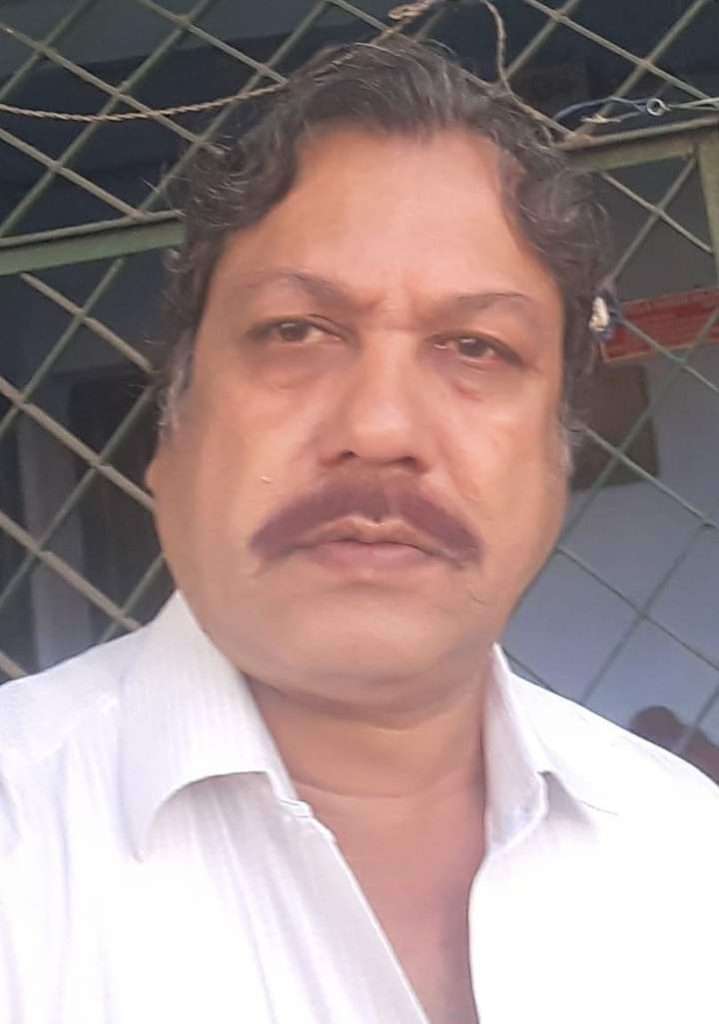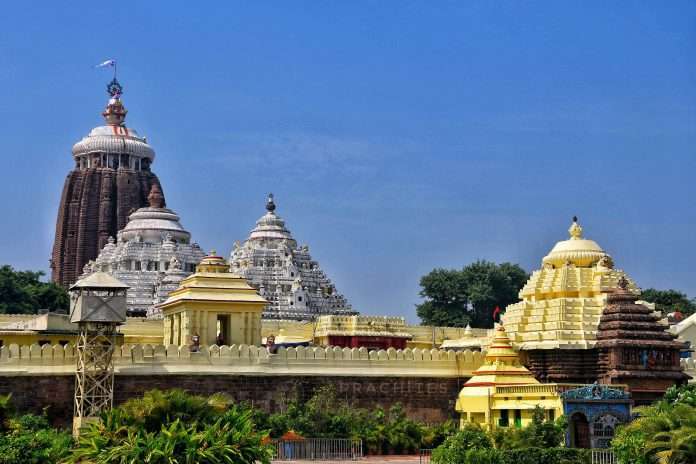Lord Jagannath, as his name signifies, is the Lord of the universe. His worship, though mainly practised in Odisha and gradually gaining popularity at the national and international level, has had a long tradition on the soil of Odisha. The Rigveda has a reference to ‘Daru’, a wooden image floating in the ocean, which obviously means the idols of Jagannath, Balabhadra and Subhadra. The Gayatri Mantra and other mantras from the Purusha Sukta having Vedic origins are associated with the worship of the three idols. The Rigveda also has a reference to Purushottam, which is the other name of Jagannath.
Lord or Swamy Jagannath is central to the culture of Odisha, and there can hardly be an Odia living either in Odisha or outside who does not have reverence for the Lord. There has been much research on him, and the scholars have ascribed his origin to various sources, including a tribal one. Since time immemorial, religious preachers, philosophers and researchers have been attracted to Puri, Jagannath Dham or the abode of Jagannath. It is one of the four Dhams (Char Dham) for the Hindus which is holy and sacred. The greatness of Jagannath has drawn people like Guru Nanak and Saint Chaitanya, who have visited Puri for a darshan of the Lord.
Once Guru Nanak Dev had been to Puri to have a darshan of the Lord. Having been tired, he slept at a place with his feet in the direction of the Lord. Seeing this, a temple priest came to him, woke him up and said, “Why have you kept your feet towards the Lord while sleeping? It is a sin.” At this Guru Nanak Dev said, “The Lord is omnipresent. Wherever you will keep your feet, it will be towards the Lord. You can see for yourself.” The priest could see Lord Jagannath in whichever direction he looked and realised his mistake and left the place, finding the Guru to be no ordinary person. Many such stories are associated with Jagannath, describing the greatness of his culture.
Saint Chaitanya also had a vision of the Lord and was known for his devotion and faith in the Jagannath culture.
Though the exact date of origin of the Lord in Odisha varies from source to source, it is believed to have predated the 10th century AD. Indrabhuti was the king of Sambalpur during the 8th–9th century, who practised both Vajrayana Buddhism and the Jagannath cult. He is also believed to have carried out Jagannath Upasana in Tantric rituals in the caves of Trikuta Hills in present-day Subarnapur district. Most scholars ascribe the origin of worship to the Sabaras, a tribal community who practised the Jagannath cult with his early form. In the course of time, various religious traditions influenced it, with Hinduism playing a major role, thereby assimilating it in its fold. The role of the Ganga rulers in spreading the Jagannath cult and constructing the Jagannath Temple of Puri has given a boost to it, thereby taking it to its present form.
There are various myths and stories associated with the evolution of the cult in Odisha. The floating of ‘Daru’ in the ocean, the presence of Krishna’s heart in the idols as Brahma Padartha, the story of King Indradyumna, Rani Gundicha, Vishwavasu, Vidyapati, Lalita and Vishwakarma making the idols of Jagannath, Balabhadra and Subhadra have remained intact in the psyche of the Odia people even till this day.
The Jagannath cult has had its impact on western Odisha. Indrabhuti, the king of Sambalpur, is believed to have practised Jagannath Upasana for the first time in western Odisha during the 8th–9th century. He equated Jagannath with Buddhadev and followed Tantric rituals in his practice. The Nagavamsi rulers of Kalahandi and the Chauhan rulers of Sambalpur have built a number of Jagannath temples in places like Junagarh, Sonepur, Sambalpur, Bolangir district and Bargarh district in western Odisha. Since tribal and other religious traditions can be found in the area, Jagannath culture has unified itself with all these. All the rituals and festivals like the Rathyatra associated with Jagannath are followed in the area. There is hardly a village without a Jagannath temple in it. Although the Shakta cult is predominant in the area with Devis like Samaleswari in Sambalpur, Sureswari and Metakani in Sonepur, Manikeswari in Kalahandi and others, this has not told upon the status of Lord Jagannath as a popular deity. The district of Sambalpur is said to have the highest number of Jagannath temples in Odisha. The Chauhan rulers of Sambalpur had patronised the Vaishnava and Jagannath cult along with Shaiva and Shakta cults, which has led to the construction of a variety of temples in the city of Sambalpur itself. Not only in western Odisha but in the whole of Odisha, the princely states or Gadajata kingdoms under their rulers have encouraged the cult and the Rathyatra in Kalahandi, Bolangir, Sonepur, Boudh, Sambalpur, Sundergarh, Keonjhar, Mayurbhanj, Jeypore and others, which has made the culture almost a way of life. Without the cult, the state would not have been able to get so many temples built in the Kalingan style with regional variations followed by the rulers.
Western Odisha has played another crucial role in spreading the Jagannath cult. Before the 12th century, when Raktavahu attacked Puri and the temple, Sovanadev, the then king of Odisha, carried the three idols to Sonepur and hid them in the caves of the Trikuta Hills for their protection. Later, Yayati Keshari carried the idols back to Puri and reinstated them in the temple. The Archaeological Survey of India has proved the event to be true, and the place has been named Patali Shrikshetra in present-day Subarnapur district with the recognition of the Puri temple authority.
There are certain practices like ‘Rathachhuan’ or touching of the chariot exclusive to western Odisha. This practice requires parents to make their children touch Lord Jagannath while on the chariot. Because of the presence of the Lord in Patali Shrikshetra for a long 144 years and Jagannath Upasana by Indrabhuti, the king of Sambalpur in the same place during the 8th–9th century, certain scholars have come to think that the cult might have originated in western Odisha. Certain other scholars have ascribed the origin of the cult to the prevalence of the ‘Sthambheswari’ or ‘Khambeswari’ practice in western and southern Odisha. But these theories need further study and research.
With references in the Rigveda and strong roots of origin on the soil of Odisha, Lord Jagannath has turned out to be a national and international deity. His popularity and hold in the state is unparalleled. He means everything to Odisha, and the very culture of the state cannot be thought of without him. A lot of research has been done on the origin and spread of the cult. There may also be regional variations due to impact of local beliefs and customs, but there is uniformity in the rituals and practices all over the state. He has also been assimilated into the Hindu Vaishnava cult. Today, Jagannath is the symbol of unity and peace standing above all castes, communities and religions.
(The views expressed are the writer’s own)

Mr. Prafulla Kumar Majhi,
Retired Asst. Director, A. I. R, is an eminent Scholar and freelance writer in English & Odia. His areas of interests are sociocultural, economic, literary, historical and analytical studies and writings.
Email: airprafulla61@gmail.com
Mobile.9861007190

